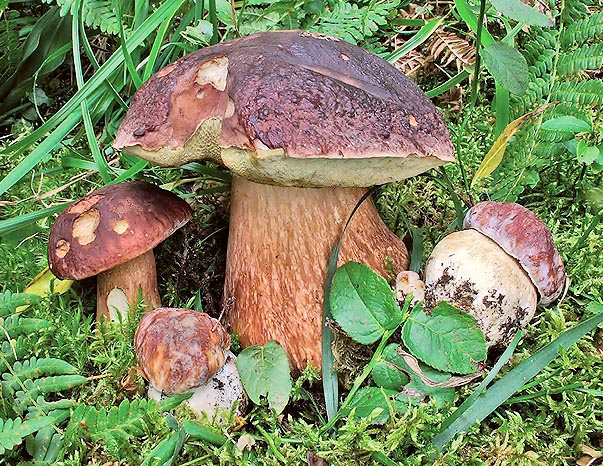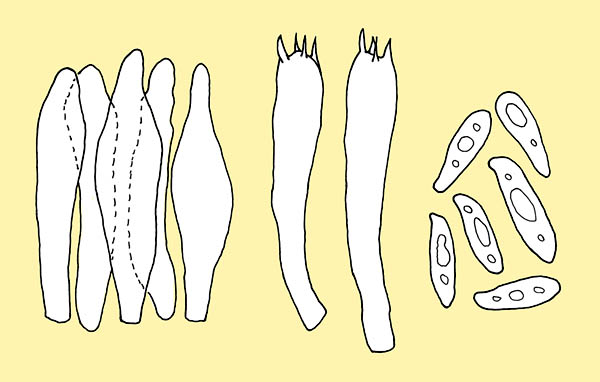
Text © Loredana Battisti

English translation by Mario Beltramini

Cap with a vinous-brown colour found also under the cuticle © Pierluigi Angeli
Family: Boletaceae Chevalier.
Subfamily: Boletoideae Singer.
Genus: Boletus Dillenius: Fries.
Section: Edules Fries.
Boletus pinophilus Pilát & Dermek 1973.
The name comes from the Latin “pinophilus” = friend of the pines, due to its growth under the pines, and for this reason it is also called Boletus pinicola.
The genus Boletus is characterized by mushrooms with hymenophore (structure which contains the fertile part of the mushroom, the hymenium, where the production of the spores takes place), formed by tubes and pores which can be easily loosened from the underlying flesh of the cap. The section Boletus usually gathers sturdy species, with persistently white flesh, stem with a net, the hymenophore shows a white colouring in the young specimen, yellow when ripe, and olive-green when aged (like the colour of the spore print).
Cap: of medium and big size, from 5-20 (25 cm) and more, compact and fleshy, initially hemispheric, then convex, never completely flat, slightly overhanging margin, lobed and then regular, somewhat greasy cuticle, finely pruinose in the young specimen, then completely glabrous, it shows a vinose-brown colouring, which can be also found under the cuticle.
Hymenophore: very small tubules, short at first, then longer, adnate, thick, from white to yellow to olive-green colour with the ripening of the spores, easily loosened from the flesh of the cap, non staining at the cut; small pores concolorous to the tubules, non staining when touched.

Boletus pinophilus cystidia, basidia and spores © Pierluigi Angeli
Stem: 5-12 x 5-8 cm, sturdy and compact, rather barrel-shaped, obese and bulbous, of a beige-brown colour, always paler than the cap, it shows in the upper part a vinose-brown net concolorous to the cap.
Flesh: white, solid, compact, non staining. Weak fungous odour and sweetish taste.
Chemical reactions: negligible.
Spores: fusiform, smooth, of 13-18 x 4-5 µm of size.
Habitat: mostly in conifer woods (pines and firs), but also in deciduous ones (chestnuts, beeches, oaks). Not very common, but not rare, very abundant in North Europe. Growth period: late summer – autumn.
Edibility: excellent choice.
Notes: Easily identified species due to the vinose-brown colour of the cap, stem with concolorous net, white, non staining, flesh.
Remarks: Can be mistaken with the boletes of the same section, mainly with young specimen of the Boletus edulis, which, among other things, shares the same habitat, but this last one shows a brown and not reddish colouring of the cap. Easy, on the contrary, the distinction with the Boletus aestivalis and the Boletus aereus, which, besides their usual different habitat, show a colouring of the cap with brown tones and a never greasy, but slightly velvety and dry cuticle.
→ For general notions about Fungi please click here.
→ To appreciate the biodiversity of MUSHROOMS please click here.
